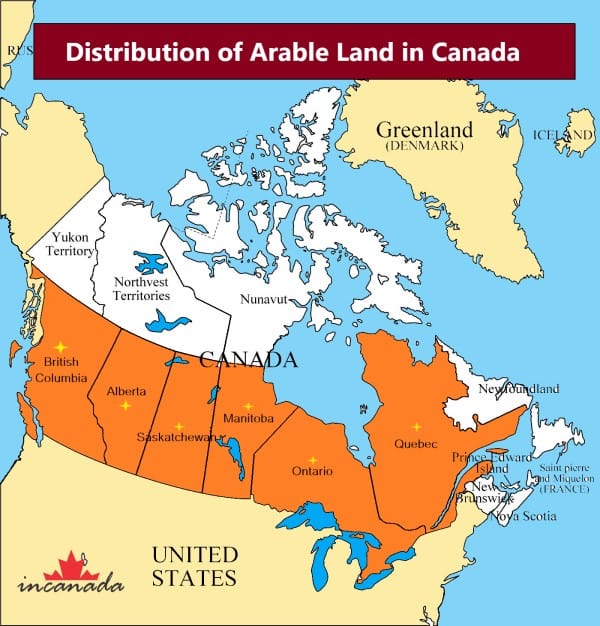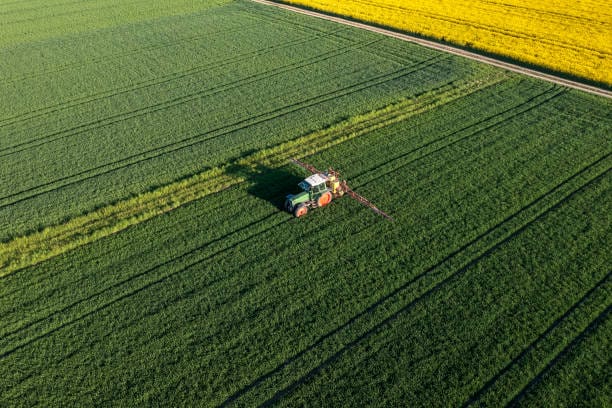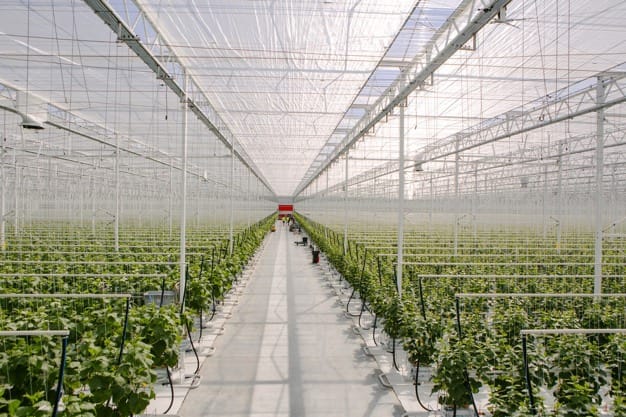Canada’s arable land is a cornerstone of its economy and food production. From the vast Prairies to the fertile valleys of Ontario and British Columbia, this article explores how arable land in Canada by province is distributed, what crops thrive where, and which provinces lead in agricultural output.
What Is Arable Land in Canada?
Arable land refers to land that is suitable for agriculture, including both crop cultivation and livestock grazing. According to the Government of Canada, the country spans approximately 167 million hectares, of which 58 million hectares (about 7%) are classified as agricultural land.
This land supports a wide range of agricultural activity—from grain farming and oilseed production to dairy and fruit cultivation.

Arable Land in Canada by Province
The Prairie Provinces—Saskatchewan, Alberta, and Manitoba—contain the largest share of arable land in Canada. These provinces feature vast stretches of farmland used primarily for large-scale crop production and livestock farming.
- Saskatchewan: The province with the highest percentage of arable land, leading in wheat, lentils, and canola production.
- Alberta: Known for its mix of grain production and strong beef industry.
- Manitoba: A balanced agricultural profile including wheat, oats, and pork.

Other provinces with significant arable land:
- Ontario: Fertile regions produce corn, soybeans, fruits, and vegetables.
- Quebec: Strong in dairy, corn, soybeans, and poultry.
- British Columbia: Ideal for fruit cultivation (berries, apples, grapes) thanks to a mild climate.
Each province’s agricultural landscape reflects its climate, geography, and local industry focus.
Table: Distribution of Arable Land in Canada by Province
| Province | Arable Land (Million Hectares) | Main Crops |
|---|---|---|
| Saskatchewan | 24.7 | Wheat, Canola, Lentils |
| Alberta | 15.2 | Barley, Canola, Beef |
| Manitoba | 9.5 | Oats, Wheat, Pork |
| Ontario | 4.2 | Corn, Soybeans, Fruits |
| Quebec | 3.2 | Corn, Soybeans, Dairy |
| British Columbia | 1.5 | Apples, Grapes, Berries |
Provinces with the Highest Agricultural Production in Canada
Ontario
Ontario is Canada’s most populous province and a major agricultural contributor. With over 200,000 farms, it produces a wide range of crops such as grains, fruits, vegetables, and is a leader in greenhouse farming.
Quebec
Located in eastern Canada, Quebec produces corn, wheat, and soybeans, but is best known for its dairy industry, accounting for over 30% of Canada’s milk production.
British Columbia
With a mild coastal climate, British Columbia is known for its fruit production, including blueberries, apples, and grapes. The province also has a strong beef and poultry industry.
How Canada Supports Sustainable Agriculture
Sustainable agriculture is increasingly important in maintaining Canada’s long-term food security and preserving its vast arable land. The Canadian government, along with provincial agencies, provides a wide range of programs and incentives to support eco-friendly farming practices.
Key initiatives include:

- Environmental Farm Plans (EFPs): Voluntary tools that help farmers assess and reduce their environmental impact.
- AgriInvest and AgriStability: Federal-provincial programs that provide financial assistance to farmers during income fluctuations, encouraging sustainable decisions without risking profitability.
- Crop rotation and soil management research: Supported by Agriculture and Agri-Food Canada, promoting healthy soil and water usage across the provinces.
- Greenhouse Gas Offset Credit System: Encourages emission reduction in the farming sector, especially in regions with intensive livestock and crop production.
By investing in modern farming techniques, resource efficiency, and climate resilience, Canada helps ensure that its arable land by province remains fertile and productive for generations to come.
Conclusion
The distribution of arable land in Canada by province highlights both the country’s agricultural strength and its diversity. From the vast grain fields of Saskatchewan to the fruit orchards of British Columbia and the dairy farms of Quebec, each region plays a key role in feeding Canadians and the world.
However, sustainable development and modern solutions are essential to overcoming the challenges Canadian farmers face today. With continued support and innovation, Canada is well-positioned to protect its agricultural resources and remain a global leader in food production.

[…] Arable Land in Canada by Province: Discover the Top Agricultural Regions […]